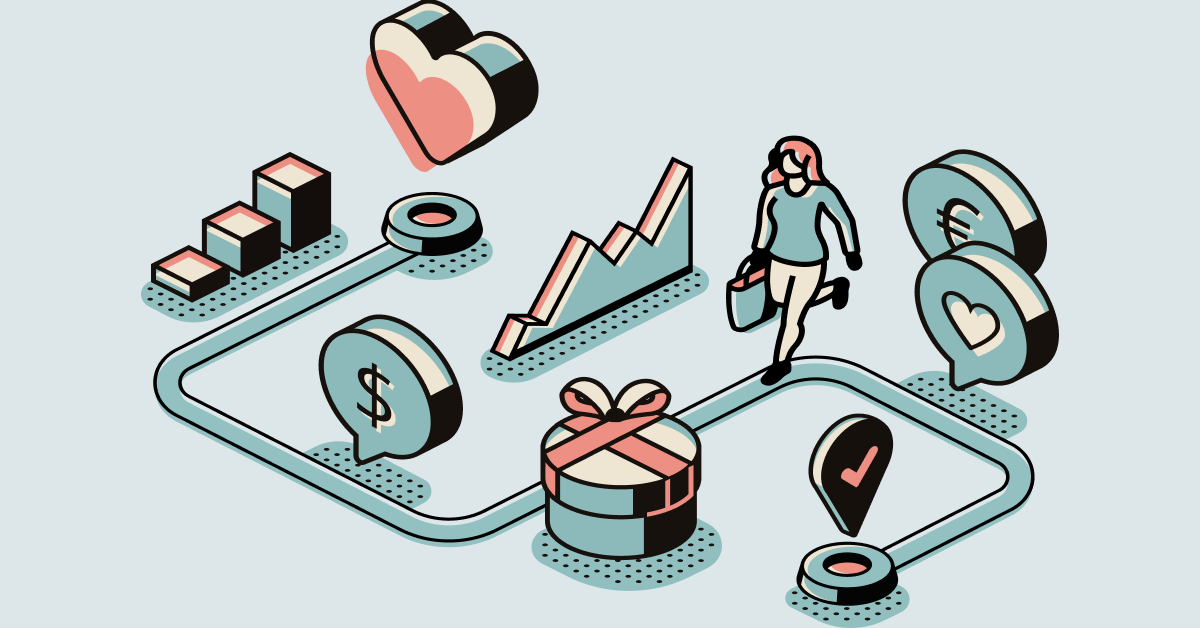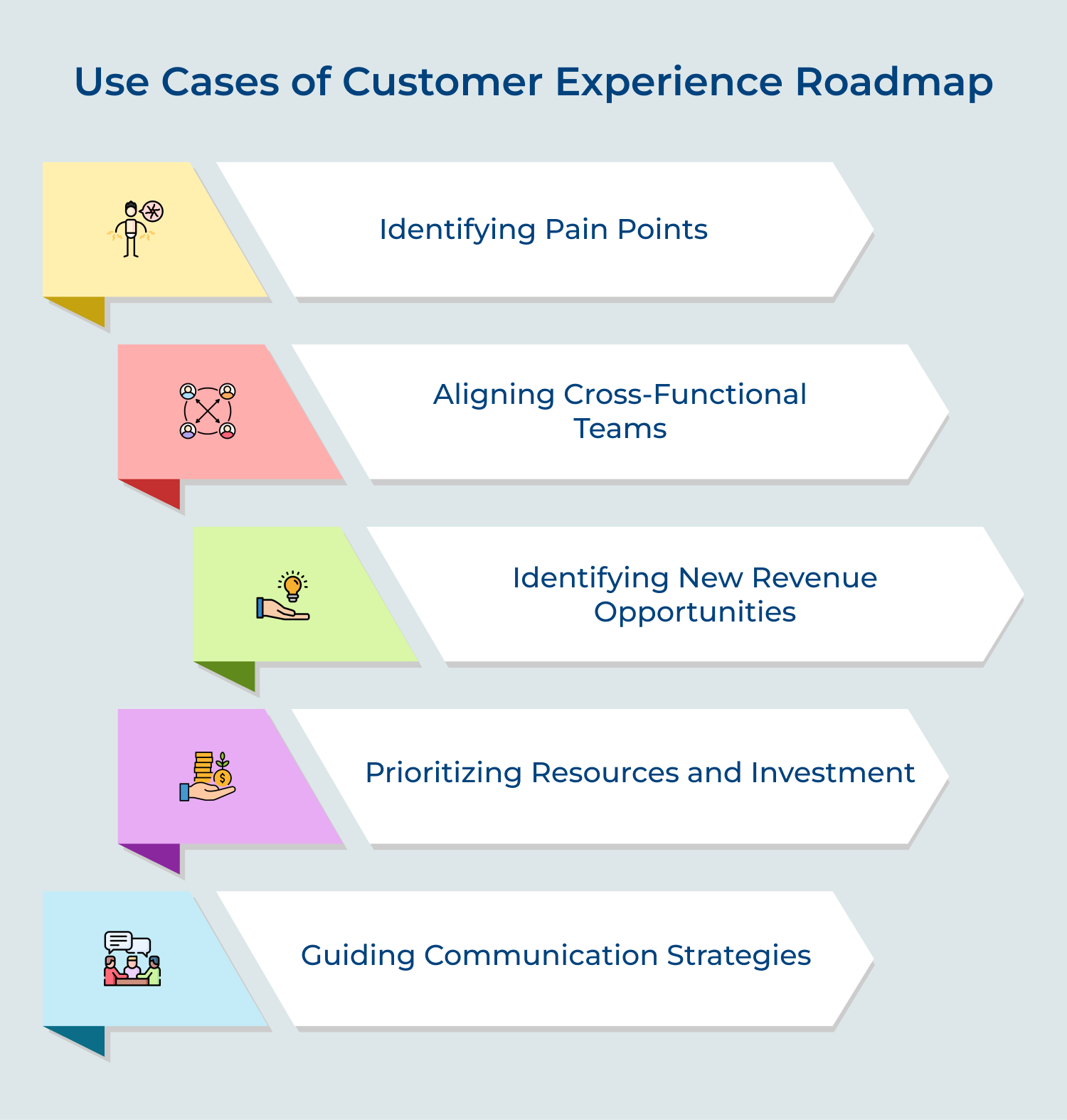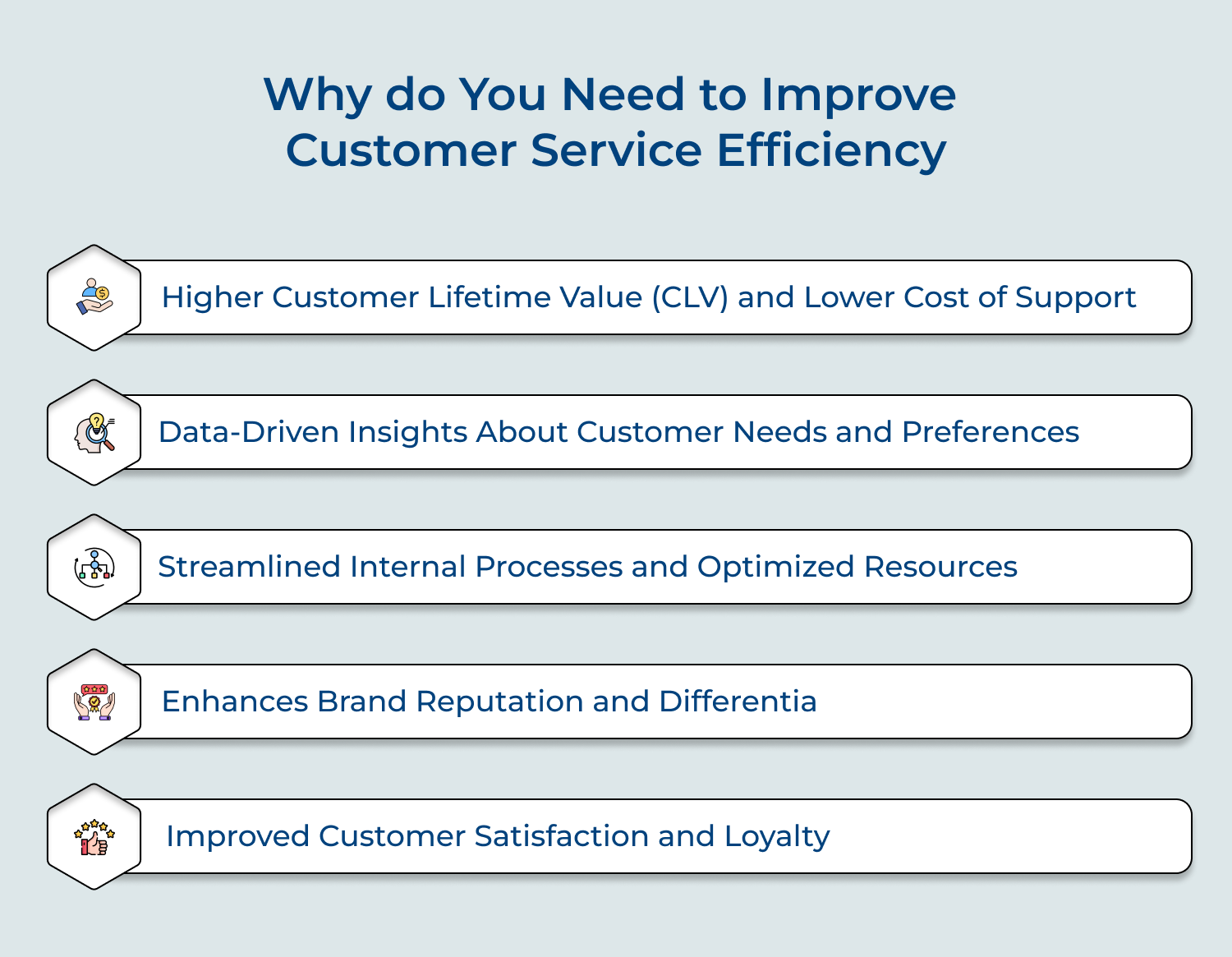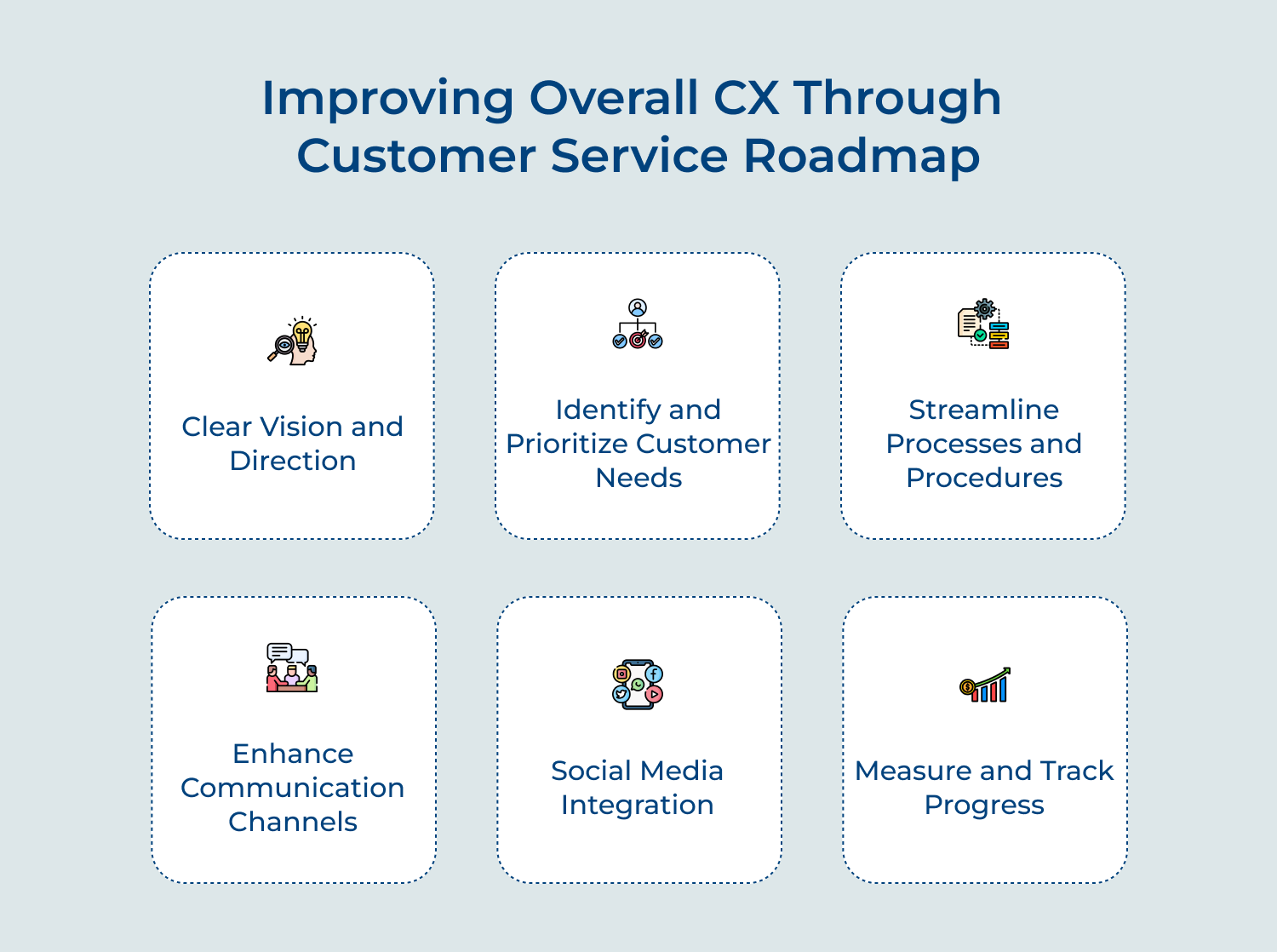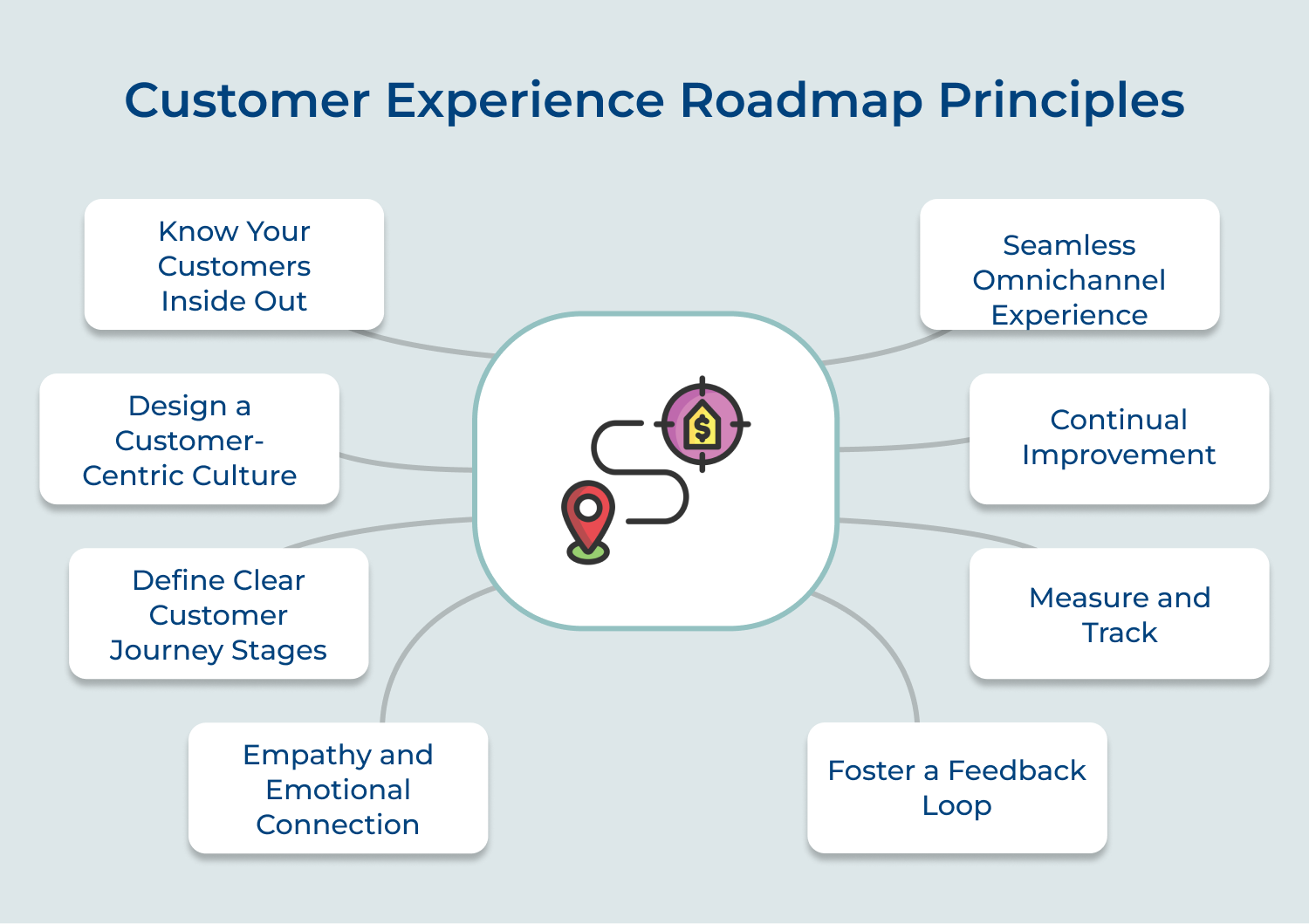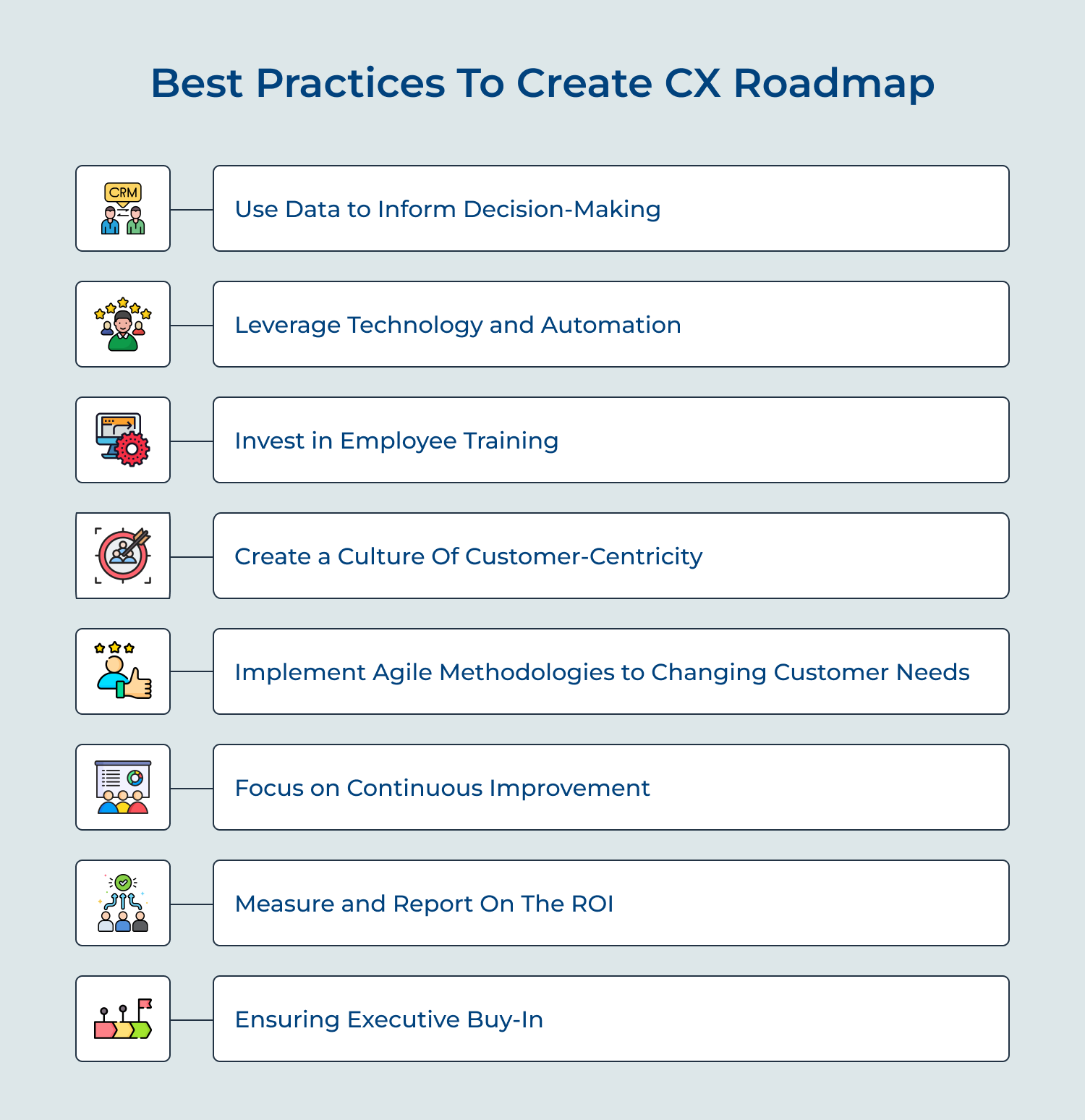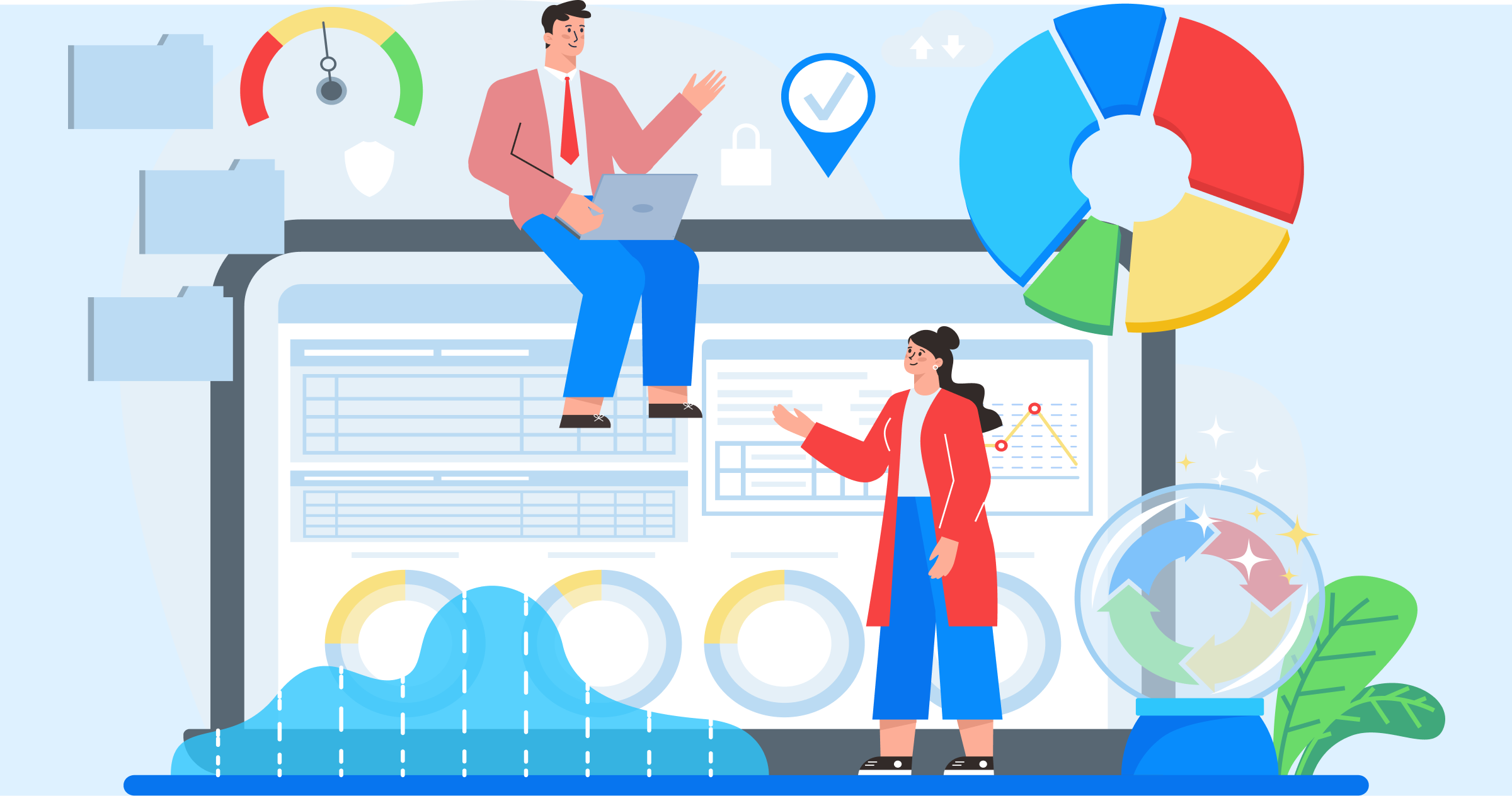Here are some ways a CX roadmap can help improve the customer experience:
1. Clear Vision and Direction
A customer service roadmap strategy provides a clear vision of where the business wants to go in terms of customer service. It outlines the goals & objectives that need to be achieved and sets a clear direction for the entire organization.
The clarity of goals enables all employees to understand the company’s customer service priorities and work towards a common goal.
How to implement it?
- Set clear goals: Break down your vision into actionable goals. These goals should be specific, measurable, achievable, relevant, and time-bound (SMART). Each goal should contribute to the overall vision and be aligned with your business objectives.
- Develop a strategy: Based on your vision, goals, market research, and key success factors, develop an actionable strategy for your service roadmap. Outline the steps you need to take, the resources you need, and the timelines for execution.
2. Identify and Prioritize Customer Needs
A customer service roadmap allows businesses to identify the specific needs and pain points of their customers. Conducting thorough research or gathering customer feedback can give valuable insights into what customers expect and desire.
The information can then be used to prioritize areas of improvement and develop targeted solutions that address the most important customer needs.
How to implement it?
- Categorize customer needs: Classify the needs into different segments or categories. It will help you organize the information and identify common themes or patterns.
- Develop a service roadmap: Break down the roadmap into manageable phases, considering resource allocation, timelines, and dependencies. It will act as a guide for ensuring a systematic approach toward fulfilling customer requirements.
- Align with business objectives: Evaluate how addressing customer needs will contribute to business growth, profitability, and market positioning. The alignment will ensure that your efforts are aligned with your long-term business strategy.
3. Streamline Processes and Procedures
A customer service roadmap can help businesses identify inefficiencies or bottlenecks in their current processes and procedures. By examining each step of the customer journey, businesses can identify areas where improvements can be made to enhance the overall experience.
The process could involve automating certain tasks, implementing new technologies, or reorganizing workflows to provide faster and more efficient service. Streamlining processes saves time and ensures that customers receive prompt as well as accurate assistance.
How to implement it?
- Streamline and simplify: Look for opportunities to automate tasks, reduce paperwork, and minimize manual intervention. Simplifying processes will not only save time but also reduce the likelihood of errors or mistakes.
- Utilize technology: Incorporate technology solutions to streamline processes and procedures. Consider implementing customer relationship management (CRM) software and digital platforms that can automate repetitive tasks.
4. Enhance Communication Channels
A key aspect of improving the overall customer experience is ensuring that customers can easily reach out for support or assistance. A customer service roadmap can help businesses evaluate their current communication channels, such as phone, email, and live chat, and identify areas where enhancements can be made.
The support could involve implementing new communication platforms, training customer service representatives to provide exceptional support, or integrating different channels to provide a seamless omni-channel experience. By offering multiple avenues for customers to connect, businesses can cater to individual preferences and improve accessibility.
How to implement it?
- Integrate live chat: Live chat is a great communication tool that allows customers to interact with your business in real time. It provides instant support, resolves issues promptly, and enhances the overall customer experience. Incorporate live chat into your website or mobile app to enable customers to reach out to you easily.
- Deploy AI chatbots: Chatbots can handle customer queries 24×7. They can be integrated into various communication channels, such as websites, messaging apps, and social media platforms. The bot can be the primary contact channel to handle simple queries, saving time for the support team to manage complex issues.
5. Employee Engagement and Empowerment
Employees are provided with a customer service roadmap that makes them feel more engaged and empowered in their roles. It gives them a clear understanding of their responsibilities and how their contributions contribute to overall customer satisfaction.
The sense of purpose fosters a positive work culture and motivates employees to go above & beyond to deliver exceptional customer service.
How to implement it?
- Provide opportunities for growth and development: Employees are more likely to be engaged when they see growth opportunities within the company. Offer training programs, workshops, and seminars that enhance their skills. Encourage employees to take on new challenges and responsibilities to develop their abilities.
- Recognize and reward performance: Acknowledge the efforts of your employees. Implement a performance recognition program that acknowledges outstanding performance through awards, incentives, or public recognition. Celebrate milestones and create a positive work environment.
6. Measure and Track Progress
A customer service roadmap strategy includes key performance indicators (KPIs) and metrics that help businesses measure their progress toward their goals. By regularly monitoring these metrics, businesses can identify areas of improvement and make data-driven decisions.
Having a clear understanding of performance allows businesses to continuously improve and provide a better overall customer experience.
How to implement it?
- Implement performance measurement tools: There are various tools and software available to help you measure progress effectively. Choose tools that suit the specific needs of your organization and provide you with real-time data on the identified KPIs.
- Communicate results and progress: It is crucial to communicate the results of the progress of the CX roadmap to stakeholders. The sharing of information helps foster transparency and keeps everyone informed about the implementation progress.
Measuring the Success of a Customer Experience Map
Before you can start measuring the success of a CX roadmap, you need to know what your objectives are. Understand what you’re trying to achieve and then determine what KPIs and metrics you’ll use to measure progress toward those objectives.
Identify KPIs and Metrics
Once you’ve established your objectives, you can begin to identify the specific KPIs and metrics that will help you measure success.
